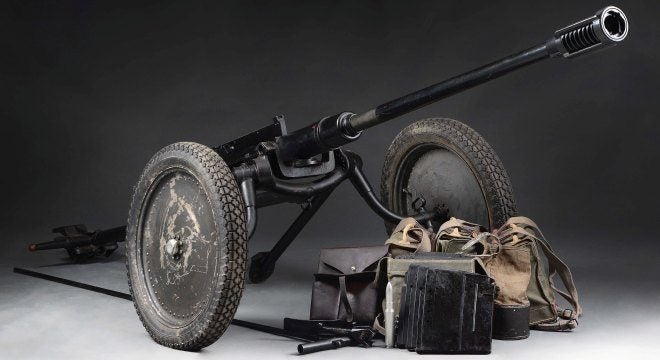At the end of the past year, we reported about the merger of James D. Julia auction house with Morphy Auctions. The former became the division of the latter. That’s why the online catalogs of their firearm auctions are now hosted on Morphy Auctions website.
I was going to write one of our articles about the most interesting, rare and unusual firearms seen in auction catalogs, but I have to confess that I couldn’t make a reasonably short list of such firearms. The Morphy auction’s catalog is full of incredibly cool and rare firearms the majority of which would deserve to be included in such a list. That’s why I decided to choose a category of firearms that is rare and cool as a category – the anti-tank weapons. Despite being an extremely rare breed of firearms on the civilian market, anti-tank weapons are still widely introduced in the Morphy Auctions catalog. There are 8 anti-tank weapons of 7 different types included in the catalog of upcoming Morphy 2018 Firearms, Militaria, & Sporting auction. The list of anti-tank weapons in this article goes in the lot number ascendancy order. The names of the weаpons link to corresponding Morphy Auctions pages where you can see more images and read more detailed descriptions of the lots.
German Panzerschreck 88mm Anti-Tank Rocket Launcher

An exceptionally well-preserved sample of this iconic WW2 German anti-tank rocket launcher is consigned to the Morphy Auctions. The official name of this weapon was Raketenpanzerbuchse 54 (RPzB 54), however, it is mostly known as Panzerschreck which means “tank’s fright”. The design of this weapon was inspired by the US Bazooka anti-tank launcher. Panzerschreck was a mobile and quite a powerful anti-tank weapon system. This particular RpzB 54 is also consigned with its distinct shield and two inert rounds that were slightly downsized from the original 88mm diameter.

The estimated price range that the auction house predicts this lot to be sold at is $1,500 – $3,000.
British Boys .55 Caliber Anti-Tank Rifle
There are two Boys .55 caliber bolt-action anti-tank rifles consigned to the Morphy Auctions. The one that you can see in the image embedded below is the Mark I version manufactured by the Birmingham Small Arms Company Limited (BSA). This version of the Boys anti-tank rifle can be distinguished by its upside down T-shaped monopod and the circular muzzle device. This rifle is consigned with one 5-round magazine.
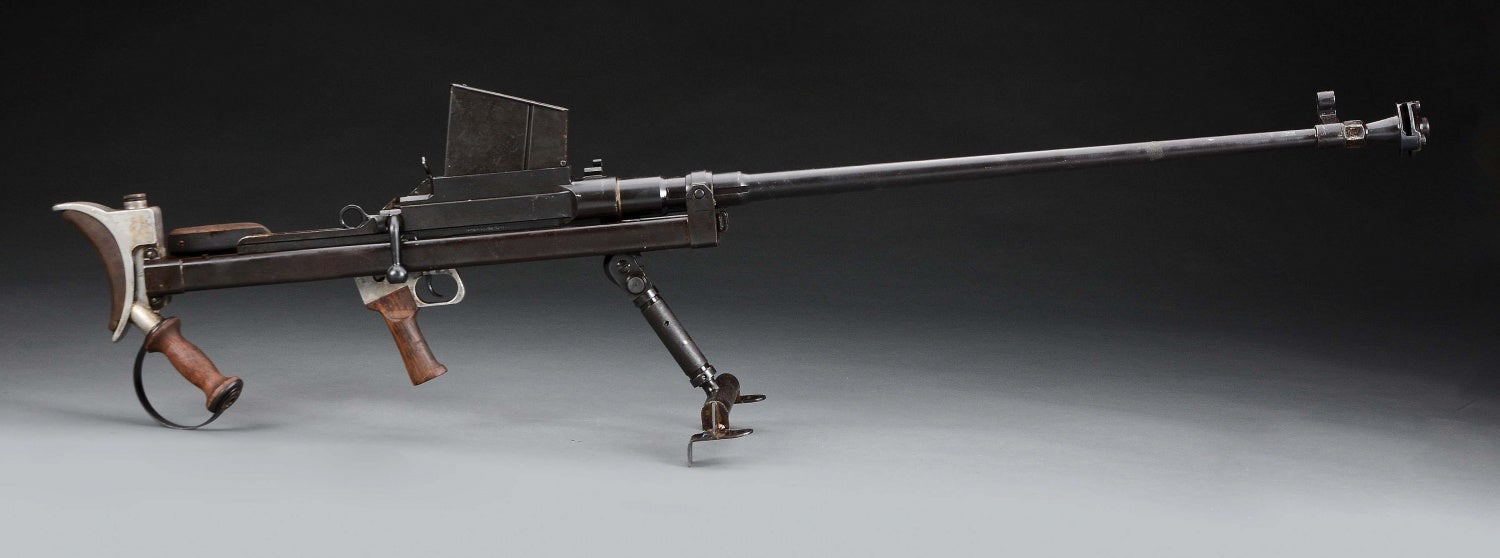
Estimated price for this Mk I Boys anti-tank rifle is $4,000 – $6,000.
The second Boys rifle consigned to Morphy Auctions is presumably an Mk I* rifle (see the image below) which were made by the Canadian John Inglis and Company and can be identified by the bipod and square muzzle device. These rifles also had a rubber buttpad which along with the improved muzzle device was supposed to reduce the felt recoil. This rifle also comes with one 5-round magazine.
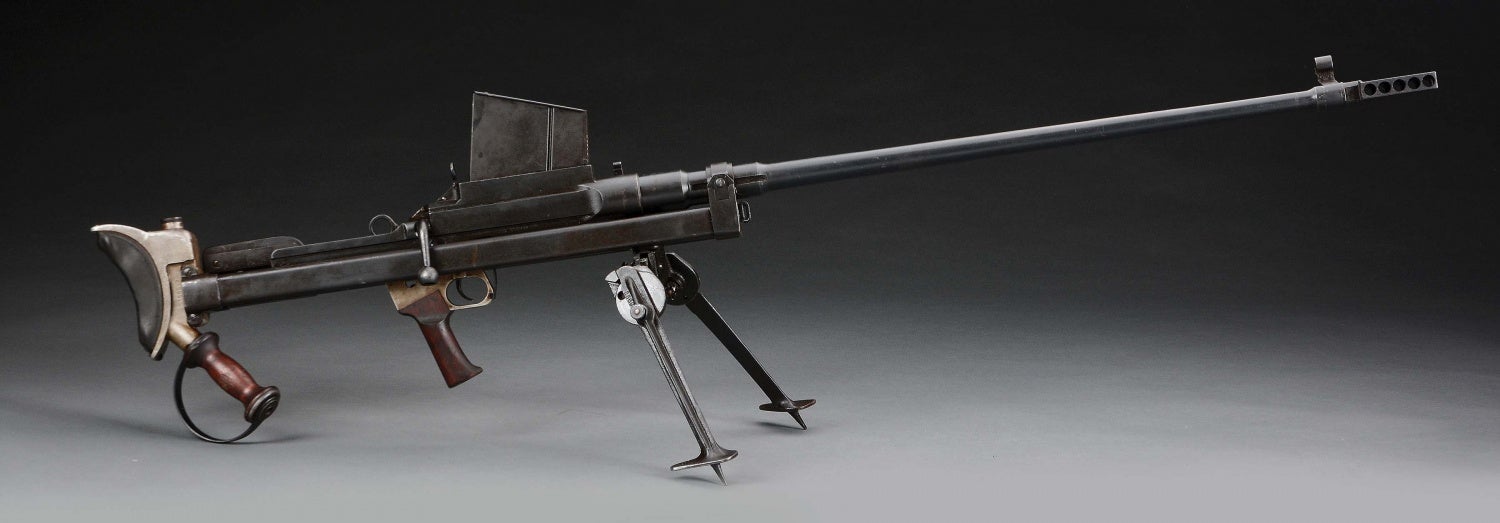
Estimated price: $4,500 – $6,500
Finnish Lahti L-39 20mm Anti-Tank Rifle

Another well-known WW2 anti-tank weapon is the Finnish Lahti L-39. This rifle is a gas-operated semi-auto magazine fed weapon. It is chambered in 20x138mmB. The magazine is installed from the top of the rifle and the spent cases are ejected downwards. Like many other weapons of this type, it was widely used in WW2, however, its effectiveness against the majority of WW2 tanks left to desire a lot. That’s why such weapons were more effective when used in anti-materiel roles.
This particular gun comes with the distinctive Lahti ski-style bipod attachment and a number of accessories including 8 magazines, 4 magazine boxes, cleaning kit, spare parts, tools, three rounds of ammunition etc.

Estimated price: $5,000 – $10,000
Swiss Tankbuchse 41 (Tb 41) 24mm Anti-Tank Gun
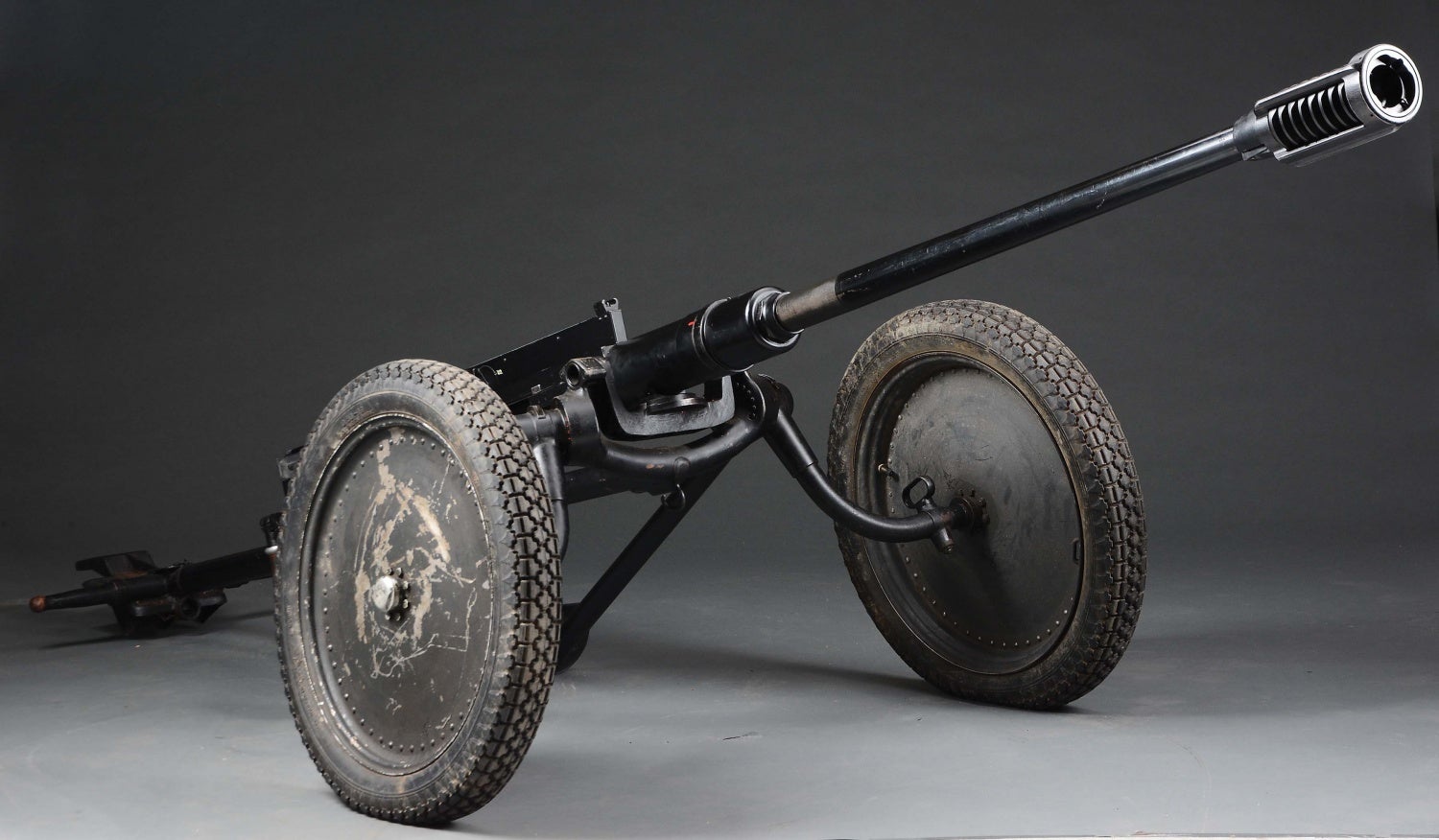
This 24mm Swiss anti-tank gun is a semi-auto short barrel recoiling weapon. It is made by the Waffenfabrik Bern. The mechanism of operation is similar to the Swiss Lmg 25. Tb 41 is fed from a 6-round detachable box magazine which is mounted from the right side of the gun. After the last round in the magazine is chambered, the magazine automatically ejects out of the gun. This feature allows to attach another magazine and keep firing without a need to manually charge the action in between the magazine changes.
According to the description on the Morphy Auctions website, “this anti-tank gun includes in addition to its original wheeled tripod and shoulder rest bar, an original transit chest, 4 original web and leather magazine carrying satchels and 13 original magazines, as well as original muzzle cover are included with this lot“.
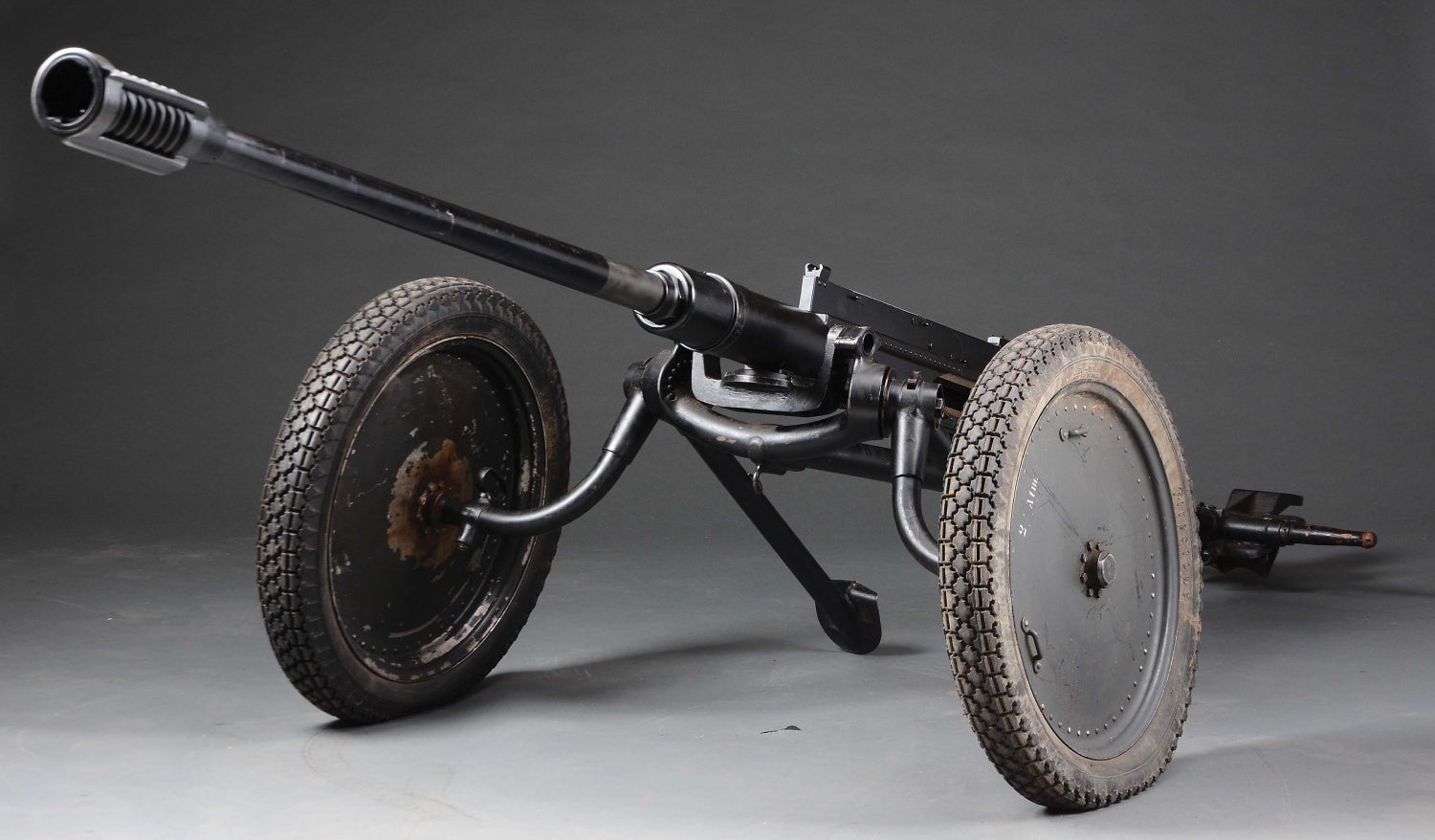
Estimated price range: $15,000 – $25,000
Swiss Solothurn S-18-1000 20mm Anti-Tank Gun
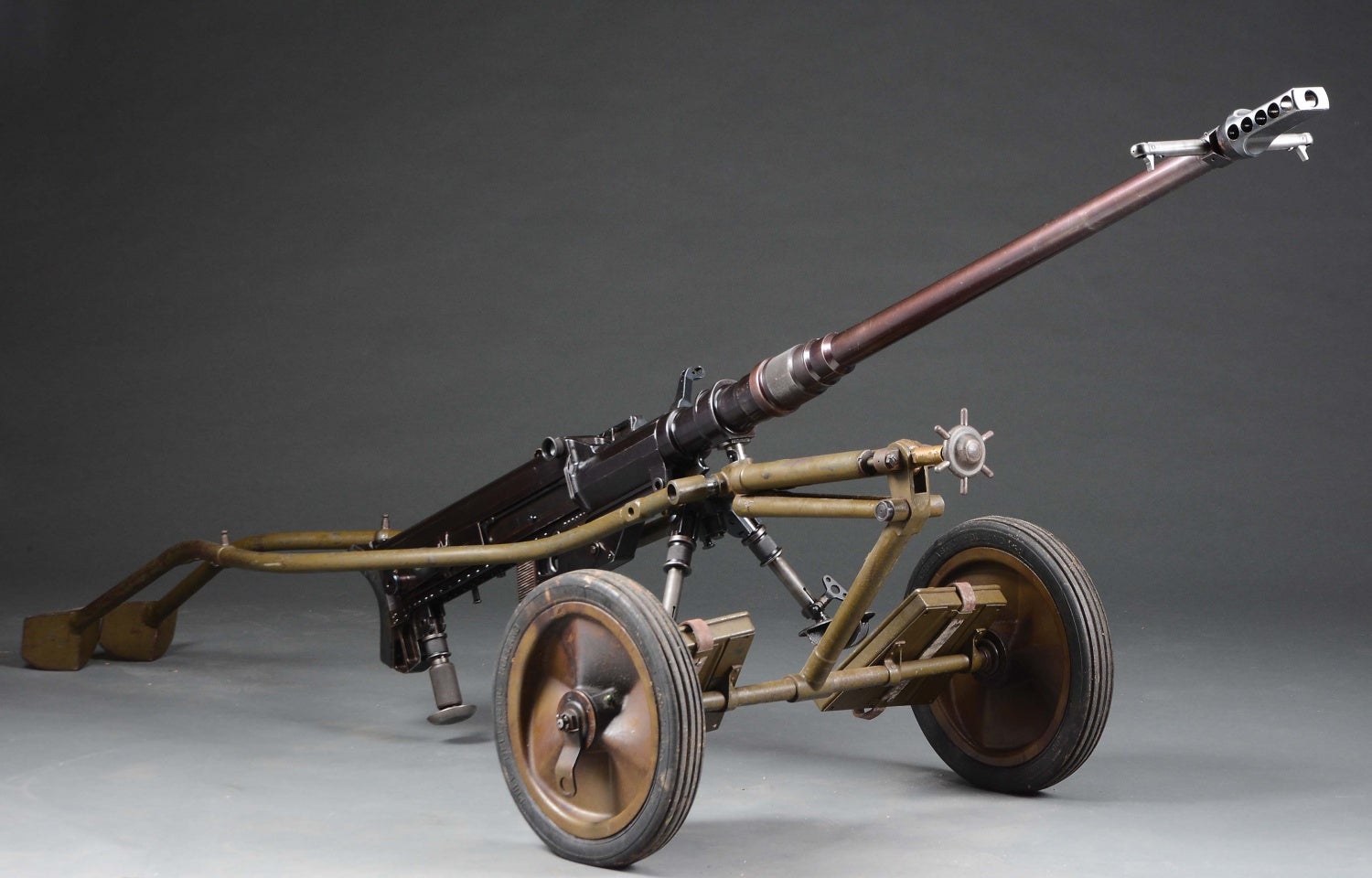
Another Swiss anti-tank weapon – the Solothurn S-18/1000. This semi-auto gun has a short barrel recoiling mechanism of operation. It is chambered in 20x138mmB cartridge like the Lahti L-39. Another similar design feature with the Lahti is the ratchet crank charging handle which is designed to make it possible to manually pull the bolt back. The Solothurn S-18/1000 is fed from 10-round detachable box magazines. The carriage has a provision to store spare magazines right next to the wheels. This gun is consigned with 13 magazines and a number of spare parts and tools.
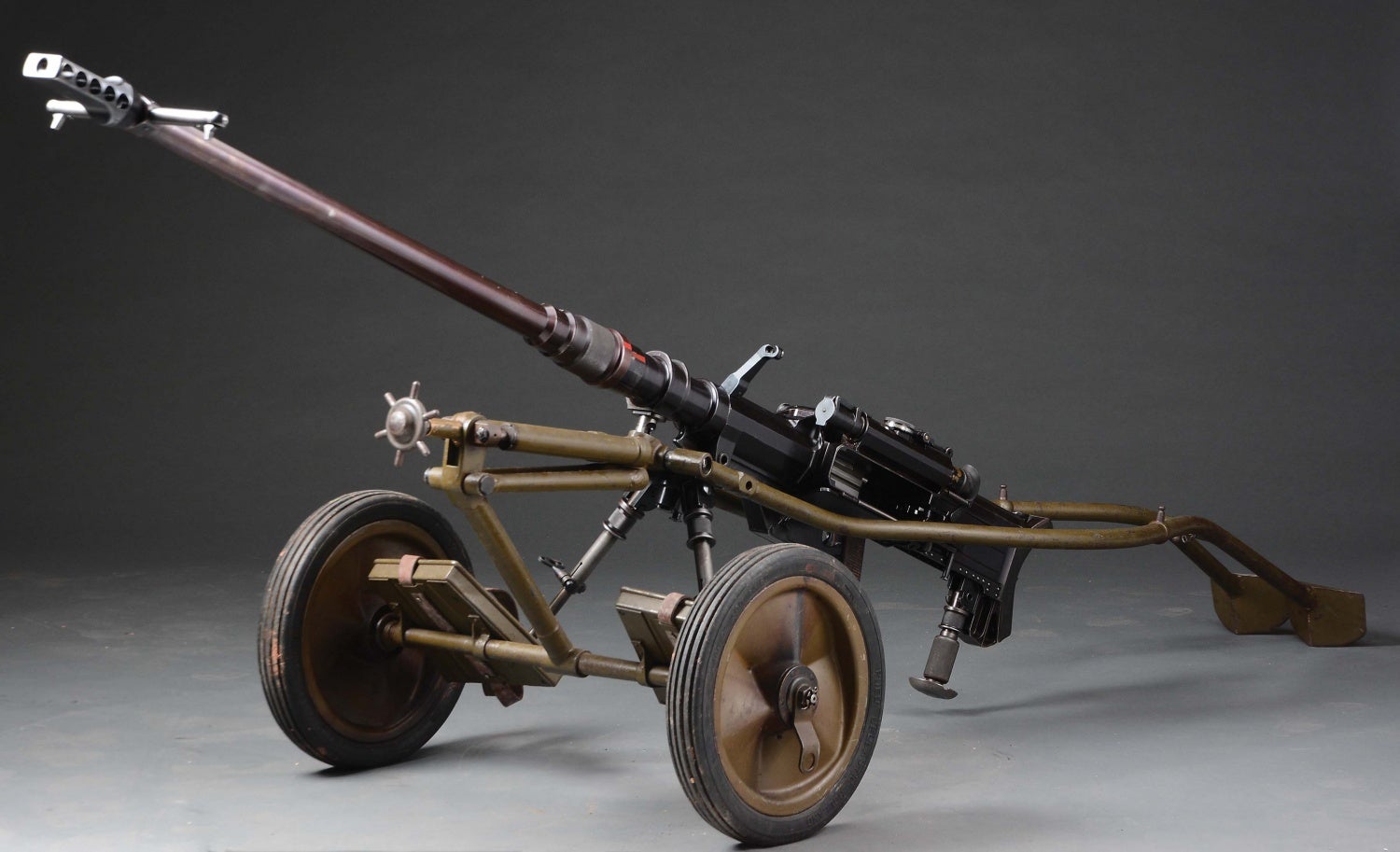
Estimated price: $15,000 – $20,000
German Granatbuchse GRB-39 Anti-Tank Grenade Launching Rifle
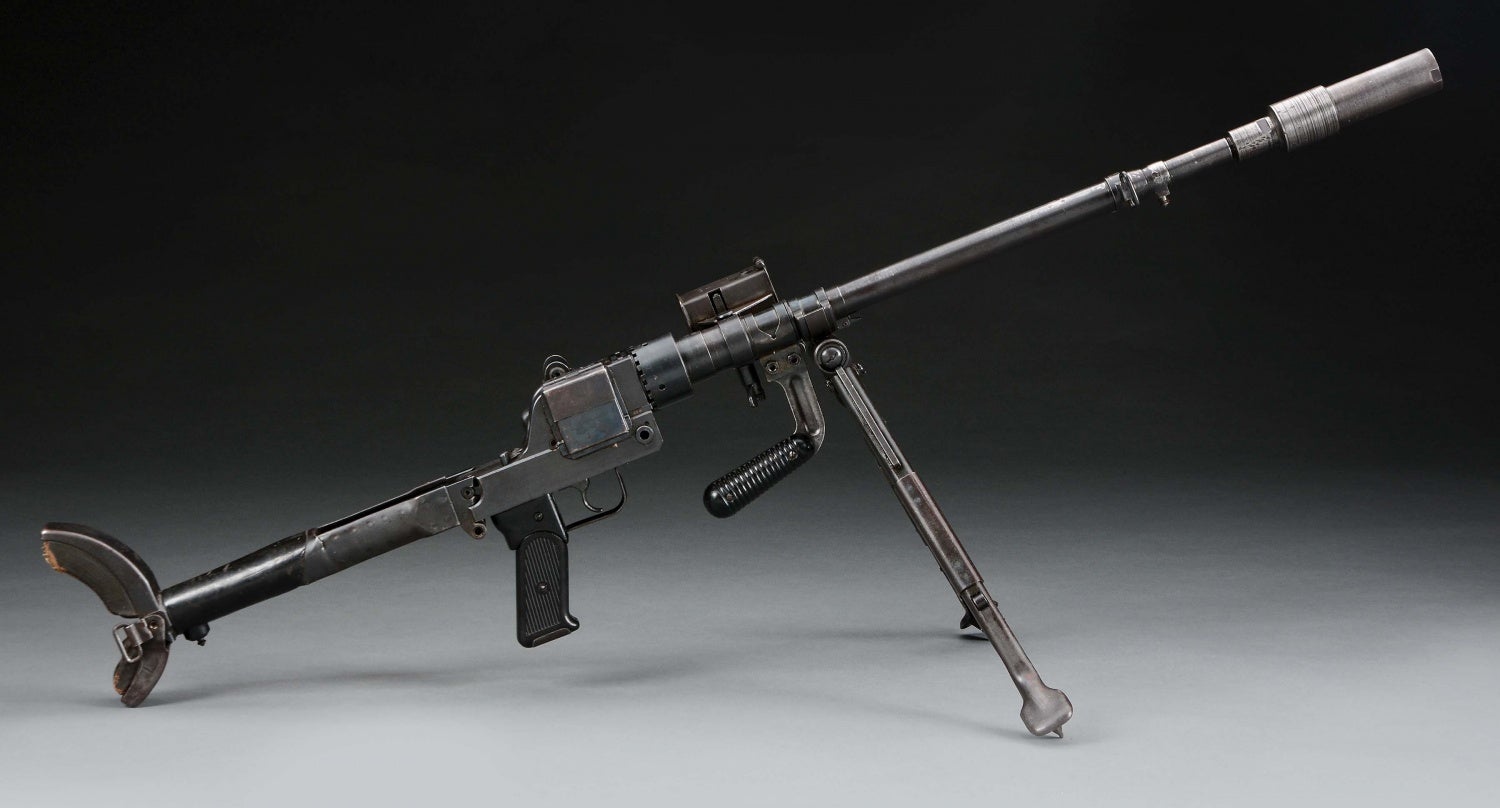
The Granatbuchse GRB-39 actually represents a Panzerbüchse 39 (PzB-39) anti-tank rifle converted to fire rifle grenades. The PzB-39s were chambered in 7.92x94mm caliber and much like many other anti-tank weapons of the era, these guns were too weak to do the job they were designed to do – penetrate tank armor. Instead of completely retiring the PzB-39 from the anti-tank role, the Germans decided to convert some of them into anti-tank grenade launching rifles. These converted PzB-39s were named Granatbuchse GRB-39.
In order to prepare this weapon for firing, the shooter had to attach the grenade over the muzzle and load the gun with a blank (loaded with a wooden bullet) 7.92x94mm cartridge. The advantage of such design is that the outside diameter of the grenade is not limited. In fact, there were grenades with different outside diameters designed for this firearm. The action of this gun is quite simple and represents a single shot falling block design. The GRB-39 conversions were also fitted with new and different sights calibrated for shooting grenades.
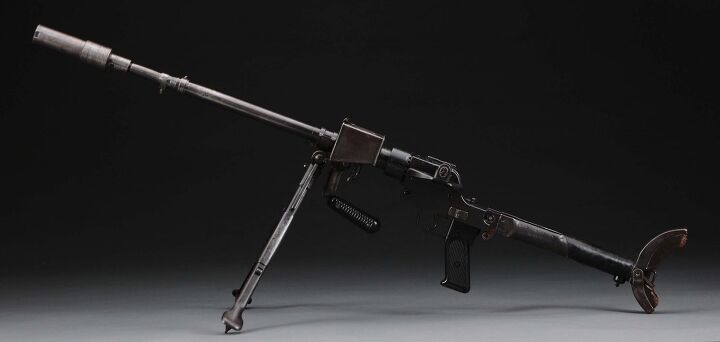
Estimated price: $7,500 – $12,500
German T-Gewehr 13mm Anti-Tank Bolt Action Rifle

The Mauser Tankgewehr M1918 (shortened to T-Gewehr) is the last anti-tank weapon on our list but it is definitely not the least in terms of its historical significance. Arguably, this is the first anti-tank rifle ever adopted. It is also the first one to be used during the WW1. This is a single shot bolt action rifle. It is basically a scaled up Mauser action. There were roughly 15,000 to 16,000 of these rifles made. The T-Gewehr was chambered in 13.2×92mmSR (a.k.a. 13.2mm TuF) and it was quite an effective anti-tank weapon in the battlefields of WW1.

Estimated price: $4,000 – $6,000
I hope you enjoyed this list of seven anti-tank weapons consigned to the Morphy 2018 Firearms, Militaria, & Sporting auction which will start on October 30 and end on November 2 of the current year. The last two lots in our list (GRB-39 and T-Gewehr) are considered Curio & Relic items. The rest of the weapons are NFA items (Destructive Devices).
Once the auction ends, we’ll publish an article with the list of the most expensive lots sold. Stay tuned!
Images courtesy of Morphy Auctions, www.morphyauctions.com
 Your Privacy Choices
Your Privacy Choices
